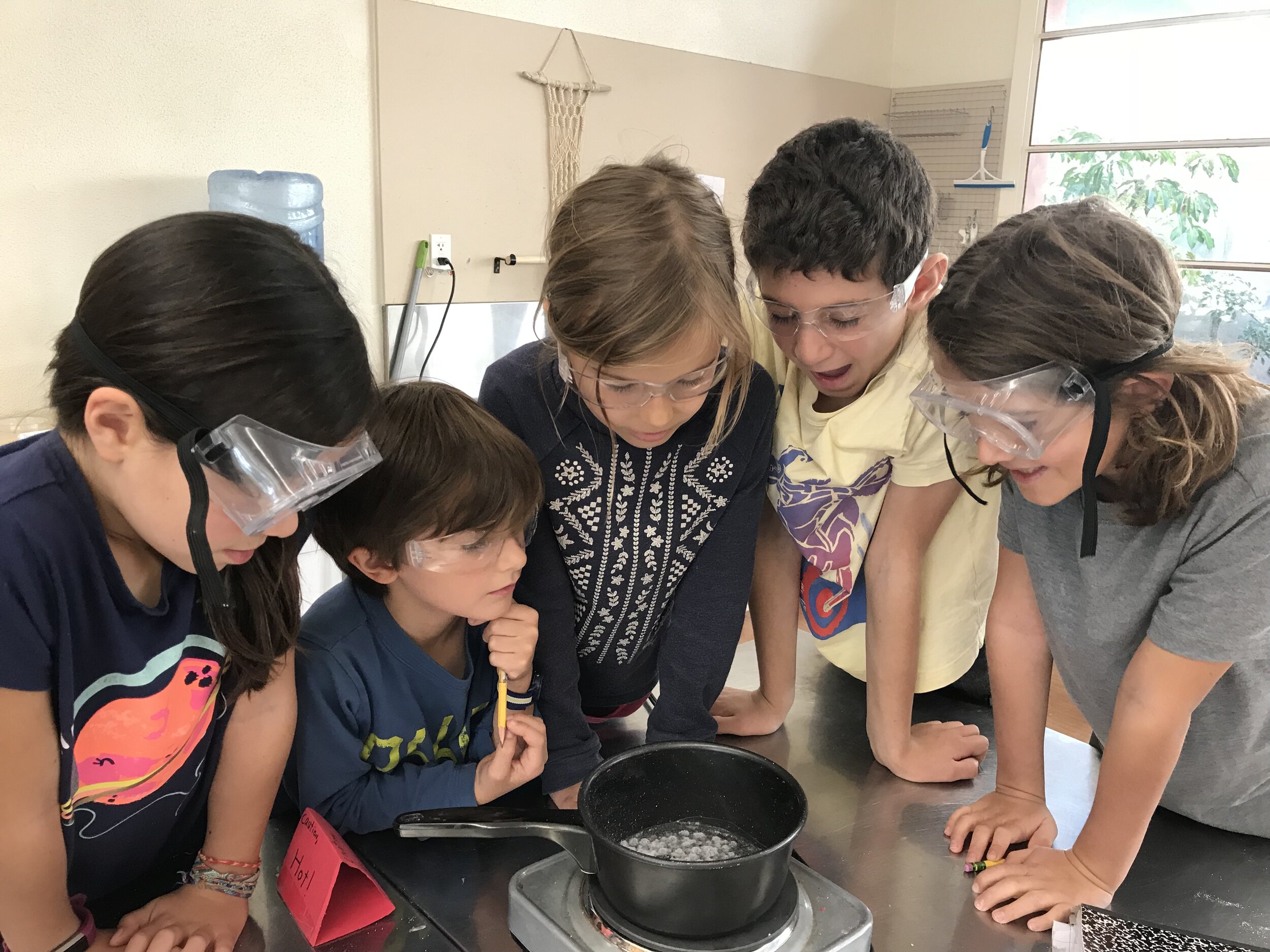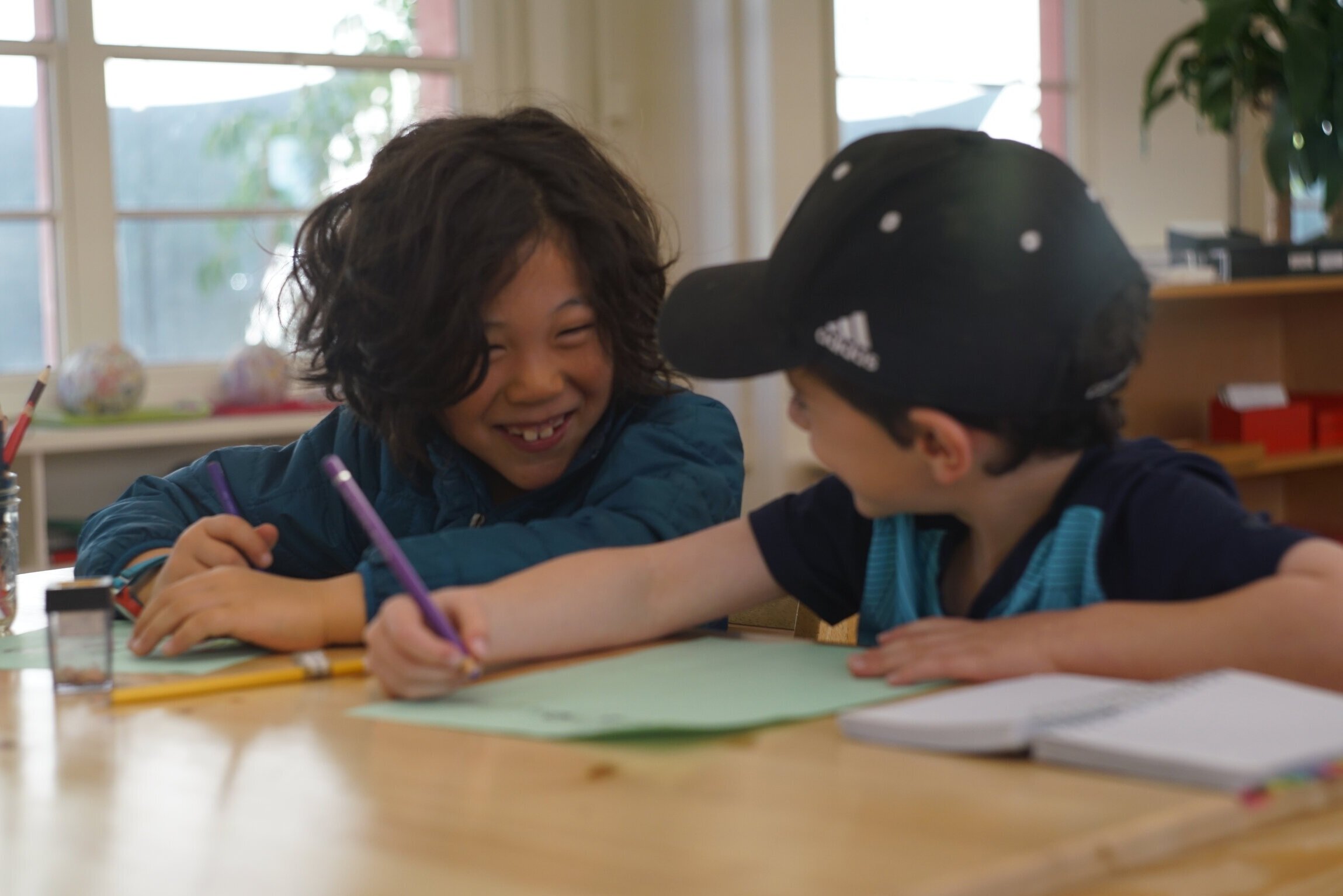Elementary 6 – 12 YEARS
The Elementary experience begins with five Great Stories meant to activate and engage the imagination of the child. The first Great Story is the Story of the Universe and it explains how the Earth was formed using impressionistic charts and demonstrations. This imaginative and engaging story sets the stage for all the work that follows. Subsequent Great Stories build on the foundation provided by the first and help launch work into other areas of the classroom. The Story of the Coming of Life, the Black Strip, the Story of Communication in Signs and the Story of Numbers all serve as the framework for work in Geography, Biology, History, Language and Mathematics. These stories provide children with the keys to these subject areas of the classroom and enough information to pique children’s curiosity and encourage exploration into various ideas while developing gratitude for those who came before them.
Lower Elementary 6-9 years
The child who enters the elementary classroom at six, is a different child from the one who attended the Primary program. This new child no longer wants to work by themselves, but rather longs for discussions with friends. This new child now has an imagination that they can use to explore new ideas rather than just working with concrete objects at hand. This new child has a reasoning mind to work through patterns and explore connections. We utilize these dynamic new attributes to create an environment specially designed for them, including tables that allow for group work, materials that pique their interest, and lessons developed to unlock ideas and allow them to explore. All of this and more becomes available to the new learner in the Lower Elementary classroom.
Upper Elementary 9-12 years
The curious child of the Lower Elementary classroom moves into the Upper Elementary room having built foundational skills and the ability to do “Big Work” and learn anything they want to know. They continue to work with impressionistic charts as well as concrete materials, but they take these ideas further by learning to abstract mathematical concepts and explore connections between the areas of their world. They dive deeply into research and engage in gigantic mathematics problems.
Cosmic Education
The Elementary aged child is full of imagination and cannot be confined to the classroom. We begin by telling Great Stories meant to intrigue and engage the children and their imagination and help them to put themselves and the world around them into context. We give children the keys to explore the universe both within the Montessori Elementary classroom and outside in the wider world.
Going Out
The classroom is a beginning, but it is not enough for the Elementary aged children. They must get out into the world to explore both content and the way that society works at this age. When the opportunity arises children are encouraged to go out into the world to find the information they seek and to begin to understand how the world works. For example, they organize their own excursions to the pet store to buy food for the class pet or to the local bakery so they can learn more for their research paper on bread. These experiences allow the children to practice the practical skills necessary to interact with the world around them.
Oak Knoll Montessori is everything we look for in a school. Our three children have thrived in the beautiful environment, and they are excelling in ways we never expected. When we started our oldest in the Toddler class five years ago, we knew we had found an amazing school with incredible guides. What we didn’t know was that we had also found a community of people that pour their hearts into each other. We have thrived as parents through the support of faculty, staff and fellow parents. We are so grateful for OKMS.
-Colleen Hungerford, Oak Knoll Parent


















